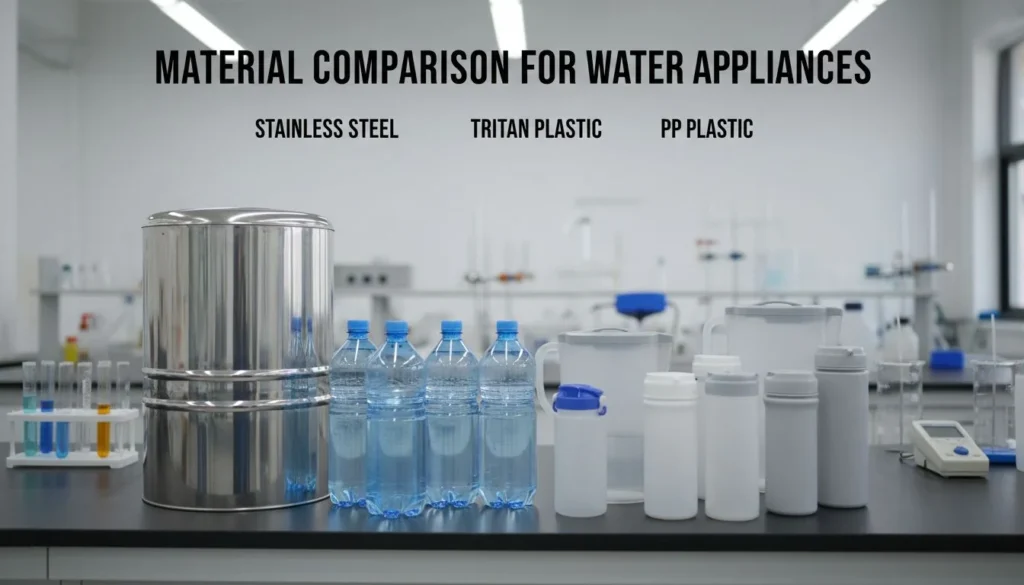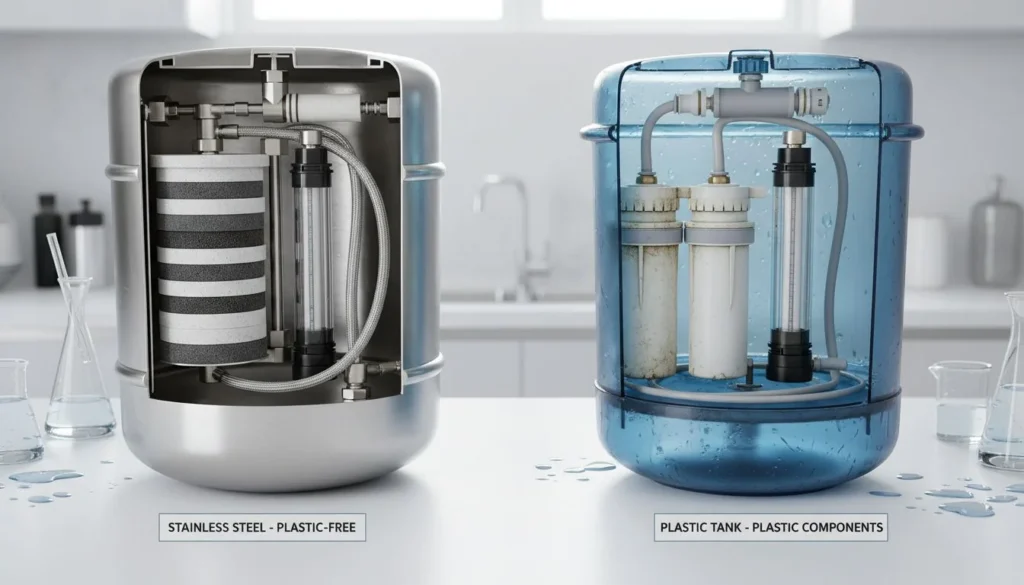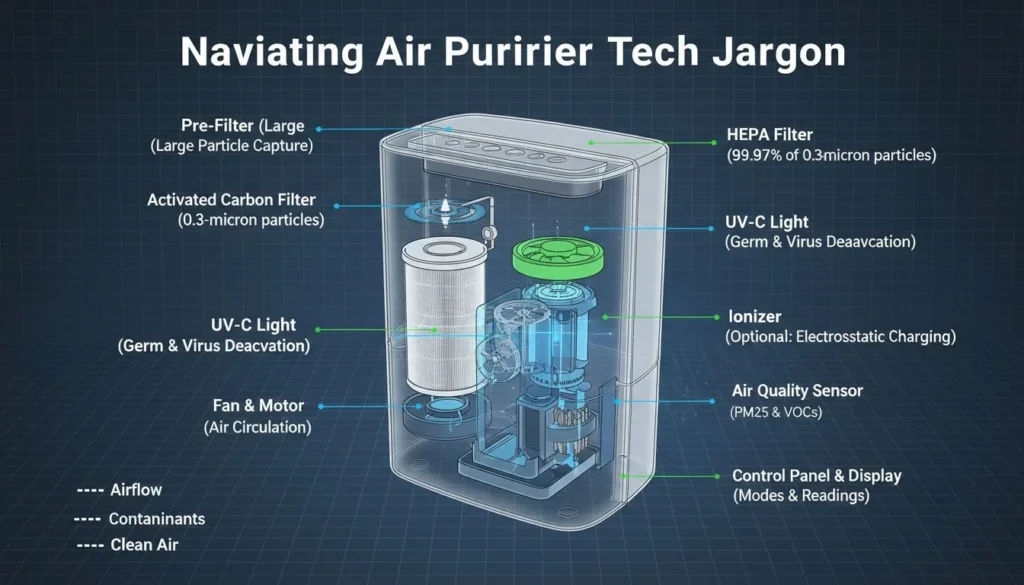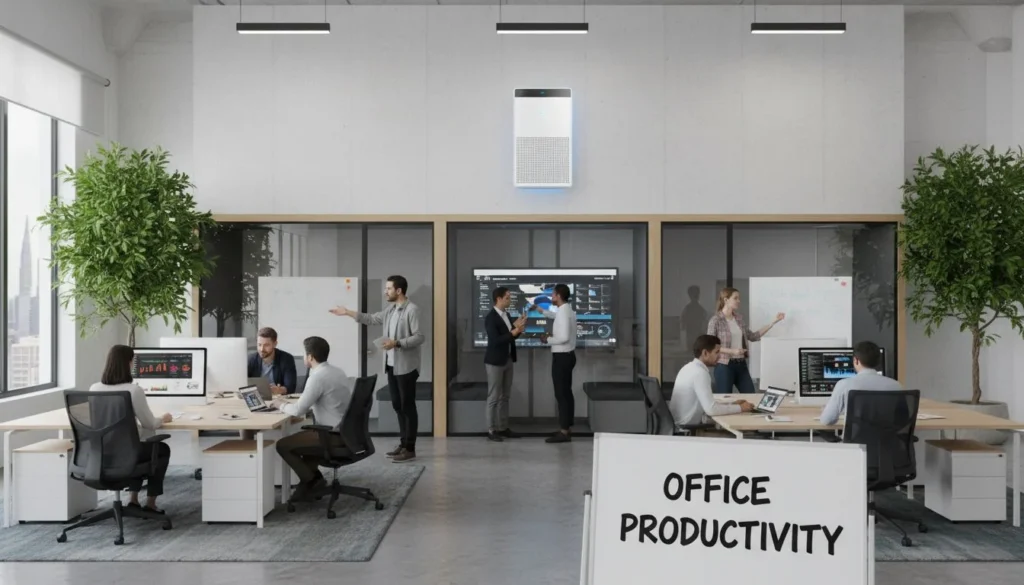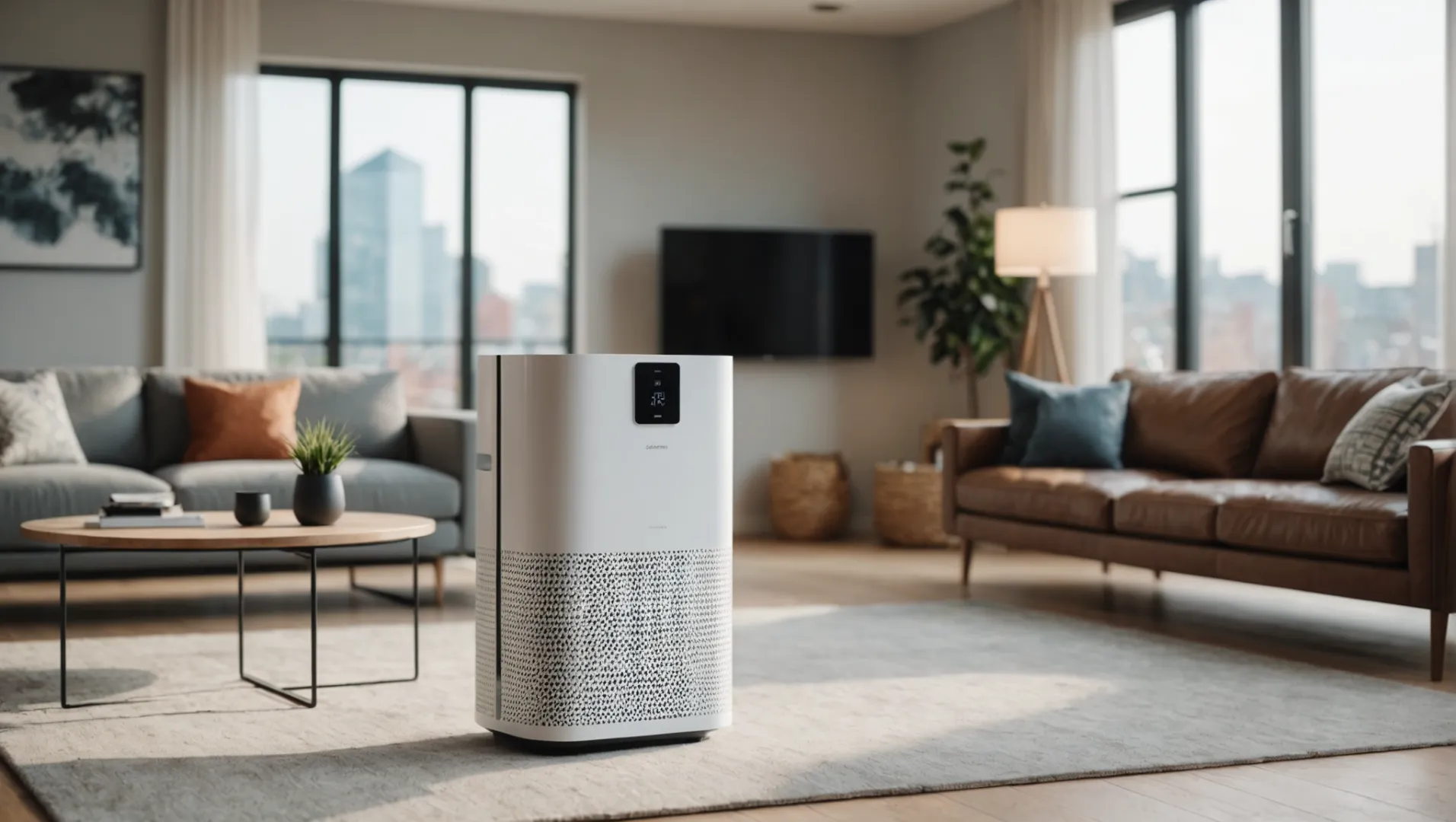
공기 정화의 미래는 단순히 공기를 깨끗하게 하는 것이 아니라 더 스마트하게 만드는 것입니다.
IoT와 AI는 보다 정밀한 필터 교체 알림, 다양한 센서 통합, 다양한 환경에 맞는 맞춤형 공기질 관리 등을 통해 공기청정기 기능을 혁신적으로 개선할 수 있습니다.
이러한 기술이 업계의 문제점을 해결할 뿐만 아니라 가정에서 건강과 에너지 효율성을 향상시킬 수 있는 혁신적인 기능을 소개하는 방법을 계속 읽어보세요.
공기청정기의 AI를 통해 정확한 필터 교체 알림을 받을 수 있습니다.True
AI는 실시간 데이터와 알고리즘을 사용하여 정확한 필터 변경 시기를 예측합니다.
공기청정기에 IoT와 AI를 통합하면 어떤 주요 이점이 있나요?
공기청정기가 사용자의 환경에 적응하여 사용자의 필요에 맞게 최적화되는 세상을 상상해 보세요.
공기청정기에 IoT와 AI를 통합하면 정확한 필터 교체 알림, 추가 센서를 통한 환경 모니터링 강화, 개별 설정에 맞는 맞춤형 공기질 관리 등의 이점을 누릴 수 있습니다.
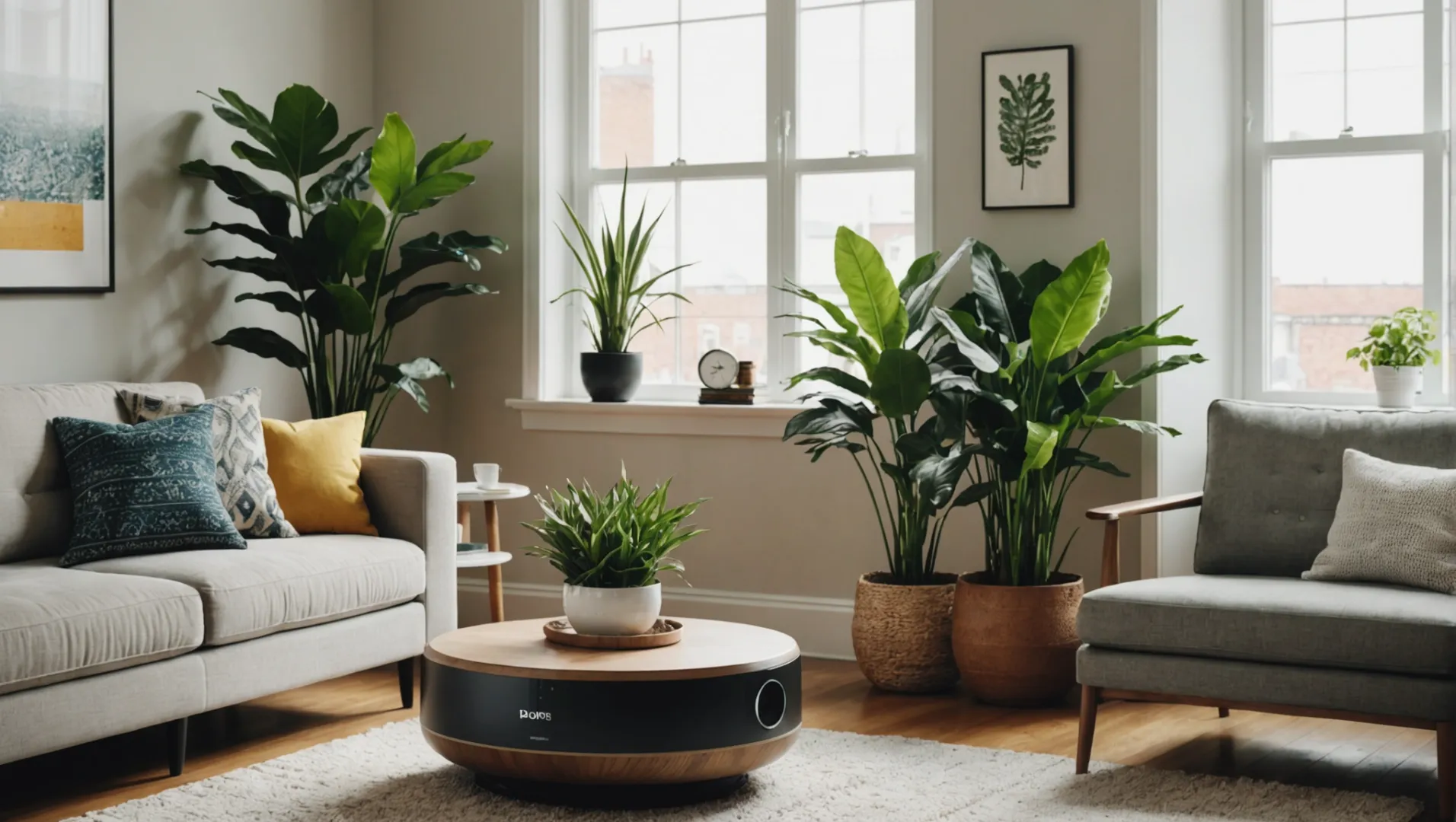
향상된 필터 교체 알림
기존에는 공기청정기가 일반적인 사용 시간을 기준으로 사용자에게 필터 교체 시기를 알려주었기 때문에 종종 부정확한 경우가 있었습니다. 하지만 IoT와 AI를 활용하면 제조업체는 압력 센서를 통해 실시간 데이터를 수집하여 정확한 필터 교체 시기를 예측하는 알고리즘을 만들 수 있습니다. 이러한 맞춤화는 사용자 편의성을 향상시킬 뿐만 아니라 최적의 성능을 보장합니다. 특정 공기질 요구 사항에 따라 필터 변경을 조정하는 기능은 게임 체인저1 다양한 환경에서 생활하는 사람들을 위한 것입니다.
종합적인 환경 모니터링
최신 공기청정기는 더 이상 미세먼지만 걸러내는 데 국한되지 않습니다. IoT와 AI의 통합으로 습도, 온도, 소음 센서 등 다양한 센서를 장치에 내장할 수 있습니다. 이를 통해 환경의 공기질을 보다 총체적으로 파악할 수 있습니다. VOC(휘발성 유기 화합물), CO2, CO, 가스 센서와 같은 고급 센서는 존재하는 오염 물질에 대한 심층적인 인사이트를 제공하여 사용자가 특정 공기질 문제를 효과적으로 해결할 수 있도록 지원합니다.
맞춤형 공기질 관리
AI는 여러 소스의 데이터를 분석하여 정화 과정을 개인화할 수 있습니다. 예를 들어, 공기청정기는 통합 센서가 감지한 재실 인원에 따라 자동으로 설정을 조정할 수 있습니다. 이러한 적응성은 공기질을 저하시키지 않으면서 에너지 효율을 극대화할 수 있음을 의미합니다. 개인화된 알림과 권장 사항을 통해 사용자는 각자의 필요에 따라 더 건강한 실내 환경을 조성할 수 있습니다.
스마트 홈 시스템과 통합
Matter over Thread 기술을 통해 스마트 홈 기기는 Amazon Alexa 및 Google Home과 같은 플랫폼에서 원활하게 통신할 수 있습니다. 이러한 통합은 공기청정기의 기능을 확장하여 사용자가 통합된 인터페이스를 통해 기기를 제어하고 모니터링할 수 있도록 합니다. 모든 센서가 중앙 플랫폼에 데이터를 제공하므로 사용자는 집의 공기질 추세에 대한 포괄적인 인사이트를 얻고 실내 환경에 대한 정보에 입각한 결정을 내릴 수 있습니다. 이러한 혁신은 공기청정기를 단순한 가전제품을 넘어 지능형 건강 지킴이로 발전시킬 수 있는 IoT와 AI의 잠재력을 강조합니다.
IoT를 통해 실시간 필터 교체 알림을 받을 수 있습니다.True
IoT는 센서를 사용하여 정확하고 시기적절한 필터 알림을 제공합니다.
AI는 공기청정기의 에너지 소비를 50%까지 줄여줍니다.False
AI는 설정을 최적화하지만 50% 감소를 보장하지는 않습니다.
AI 기반 센서는 어떻게 공기질 모니터링을 개선할 수 있을까요?
AI 기반 센서는 더 높은 정밀도와 적응성을 제공함으로써 공기질 모니터링에 혁신을 일으키고 있습니다.
AI 기반 센서는 실시간 데이터를 수집하고 정확도를 높이며 특정 환경에 맞게 알림을 사용자 지정하여 공기질 모니터링을 개선합니다.
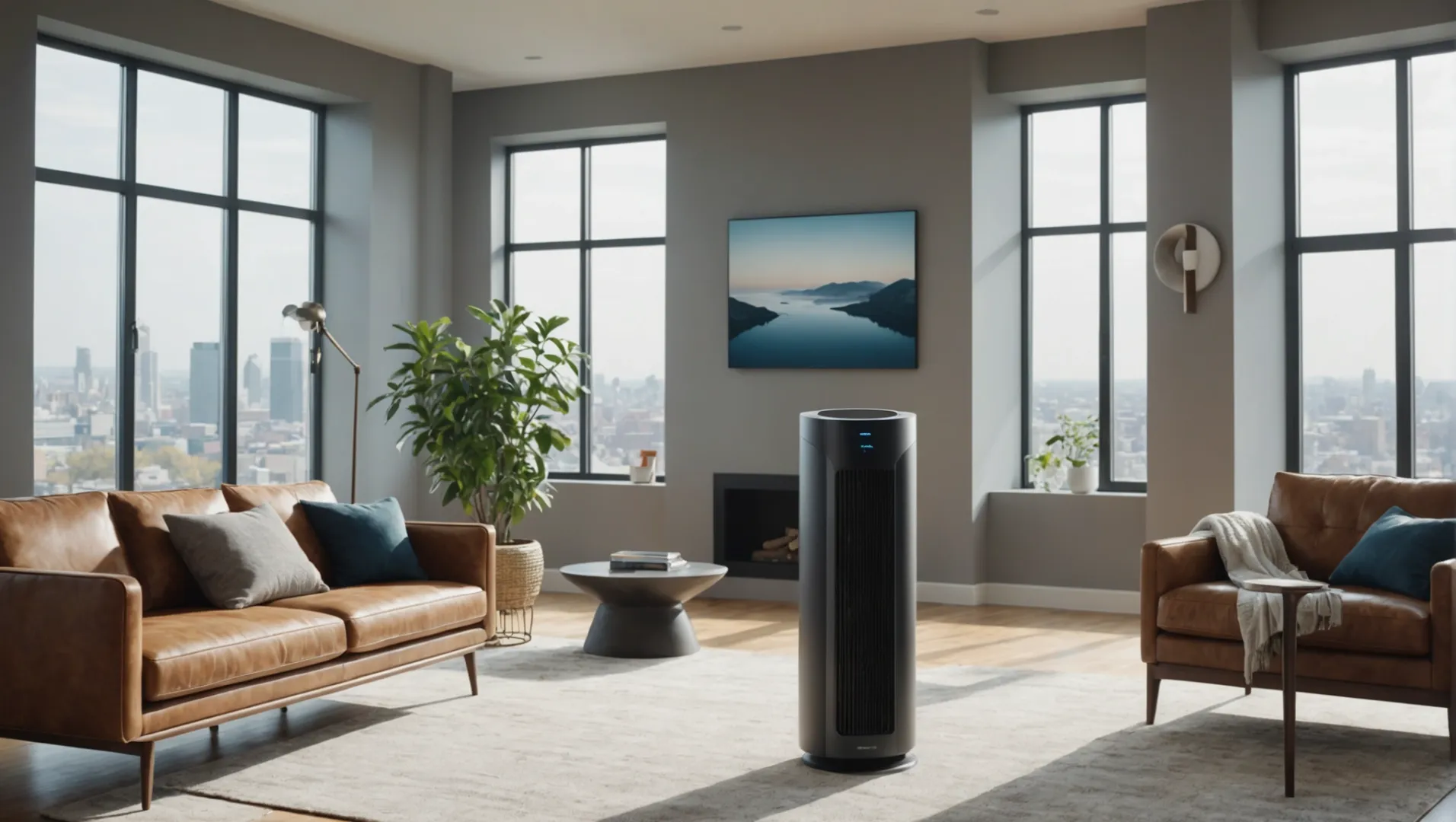
실시간 데이터 수집
공기청정기에 내장된 AI 기반 센서는 다양한 환경 요인에 대한 실시간 데이터를 지속적으로 수집합니다. 여기에는 기존의 미세먼지뿐만 아니라 습도, 온도, 심지어 휘발성 유기 화합물(VOC). AI 시스템은 이러한 데이터 포인트를 분석하여 특정 시점의 공기질에 대한 종합적인 개요를 제공할 수 있습니다.
예를 들어, 다음과 같은 조합을 통합하여 PM2.5 및 VOC 센서를 통해 공기청정기는 오염원과 그 수준을 효과적으로 파악할 수 있습니다. 이러한 실시간 인사이트를 통해 정화 설정을 즉각적으로 조정하여 전반적인 실내 공기질을 개선할 수 있습니다.
향상된 정확도 및 정밀도
기존 공기청정기는 타이머나 수동 입력에 의존해 필터 교체 시기를 결정하는 경우가 많습니다. 하지만 이 방법은 환경 조건이 다양한 사용자에게는 부정확하고 불편합니다. AI 알고리즘2 필터 내에 배치된 압력 센서에서 수집된 데이터를 활용하여 교체가 필요한 시기를 예측합니다.
이러한 예측 기능은 정확도를 높일 뿐만 아니라 성능이 저하되기 전에 사용자에게 필터 교체에 대한 알림을 제공하여 최적의 공기 정화를 유지합니다.
다양한 환경을 위한 사용자 지정
AI를 통합하면 공기청정기가 사용자 행동과 외부 조건을 학습하여 다양한 환경에 적응할 수 있습니다. 예를 들어, 스마트 공기청정기는 재실 센서를 사용하여 사람이 있는 시간을 파악하여 방의 재실 여부에 따라 작동을 조정할 수 있습니다.
또한 다음과 같은 스마트 홈 시스템과 통합할 수 있습니다. 물질 지원 플랫폼3 는 이러한 디바이스가 사용자의 선호도와 일상을 학습할 수 있음을 의미합니다. 이러한 통합을 통해 일상 활동과 특정 건강 요구 사항에 맞춰 개인화된 공기질 관리가 가능합니다.
센서 통합 확장
최신 공기청정기에는 기존에 사용되던 센서보다 더 다양한 센서가 탑재되어 있습니다. 여기에는 조용한 환경에서 작동 소리를 줄이기 위한 소음 센서, 주변 환경에 적응하는 조명 센서, 실내 공기질을 모니터링하는 CO2 센서 등이 포함됩니다.
예를 들어, HisoAir의 "WellCube" 프로젝트는 10가지 이상의 센서를 통합하여 AI 시스템이 분석할 수 있는 데이터의 잠재적인 폭을 보여줍니다. 이러한 접근 방식은 포괄적인 환경 인사이트를 제공할 뿐만 아니라 실내 쾌적성의 여러 측면을 해결하여 사용자 경험을 향상시킵니다.
AI 센서는 미세먼지만 모니터링합니다.False
AI 센서는 VOC, 습도, 온도 등 다양한 요소를 추적합니다.
AI는 성능이 저하되기 전에 공기 필터 교체를 예측합니다.True
AI는 압력 센서 데이터를 사용하여 필터 교체 시기를 예측합니다.
스마트 공기청정기가 건강 결과를 개선할 수 있을까요?
스마트 공기청정기는 우리의 생활 공간을 건강을 증진하는 환경으로 변화시킬 수 있습니다.
스마트 공기청정기는 공기 중 오염 물질을 제거하고, 맞춤형 공기질 솔루션을 제공하며, 건강 모니터링 시스템과 통합하여 건강 결과를 크게 개선할 수 있습니다.
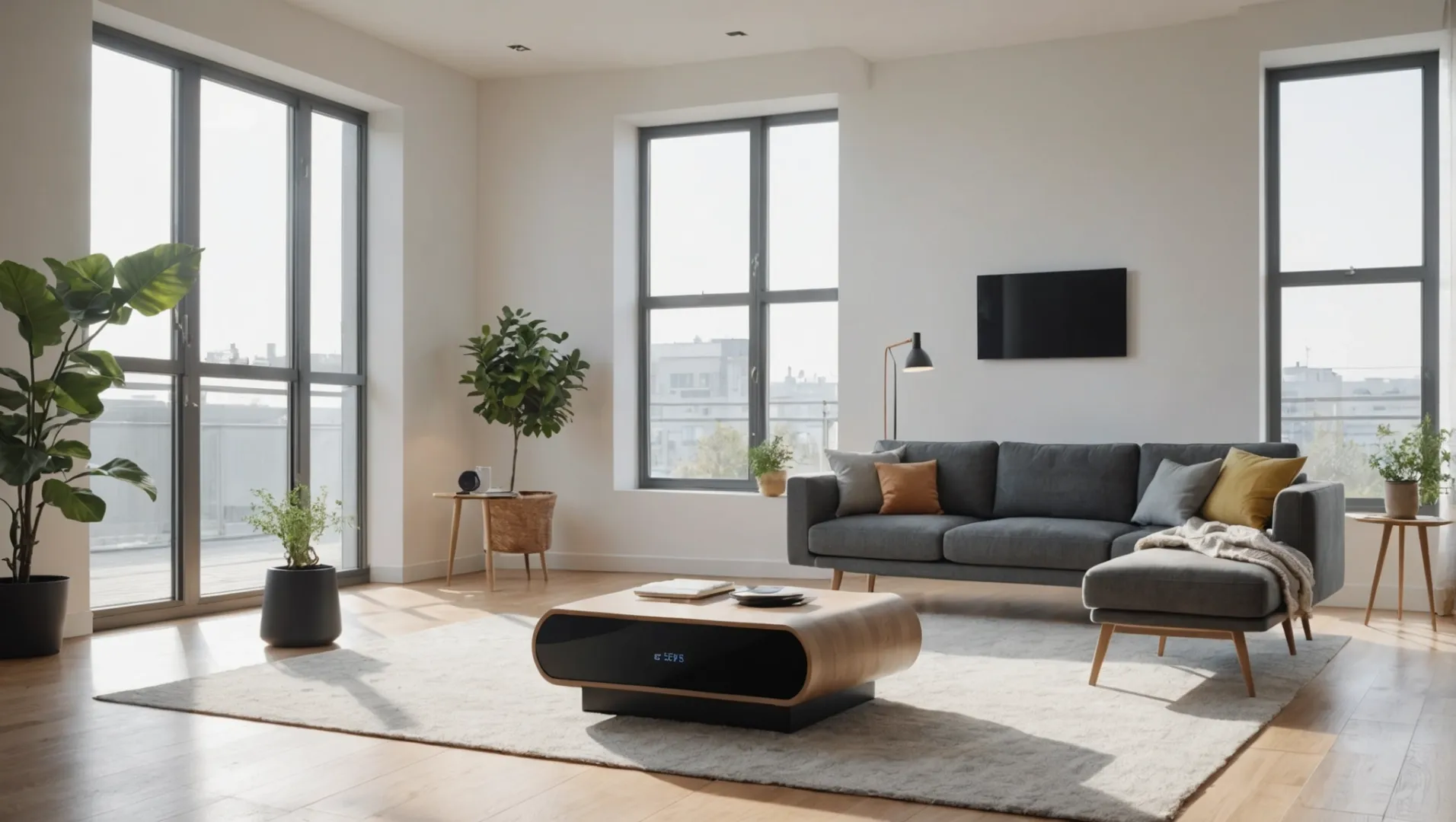
대기질 문제 해결
기존의 공기청정기는 다양한 환경 조건에 적응할 수 있는 능력이 부족하여 오염 물질을 효과적으로 제거하지 못하는 경우가 많습니다. 첨단 센서가 장착된 스마트 공기청정기는 다음과 같은 광범위한 공기 중 오염 물질을 감지하고 제거할 수 있습니다. VOC (휘발성 유기 화합물), CO2 및 기타 유해 가스를 측정합니다. 이러한 정밀한 모니터링을 통해 실내 공기질을 최적의 수준으로 일관되게 유지하여 호흡기 및 심혈관 질환의 위험을 줄일 수 있습니다.
맞춤형 공기질 솔루션
AI 기술의 등장으로 스마트 공기청정기는 집안 환경에 맞는 공기질 데이터를 분석할 수 있게 되었습니다. 이러한 장치는 머신 러닝 알고리즘을 활용하여 과거 데이터와 현재 상태를 기반으로 작동을 예측하고 조정할 수 있습니다. 이러한 개인 맞춤형 접근 방식은 알레르기나 천식과 같은 호흡기 질환이 있는 개인이 자신의 건강 상태에 맞는 환경을 누릴 수 있다는 것을 의미합니다. 본질적으로 이러한 공기청정기는 현재의 공기질에 반응할 뿐만 아니라 미래의 변화를 예측하여 사전 예방적인 솔루션을 제공합니다.
상태 모니터링 시스템과 통합
스마트 공기청정기에 IoT를 통합하면 다른 스마트 홈 시스템 및 개인 건강 기기와 통신할 수 있습니다. 예를 들어, 공기청정기를 건강 앱에 연결하면 현재 건강 데이터나 지역 오염도 예측에 따라 설정을 조정할 수 있습니다. 강조 표시된 것처럼 히소에어 웰큐브 프로젝트4이러한 통합을 통해 공기질 관리가 전반적인 웰빙 증진을 목표로 하는 더 큰 에코시스템의 일부가 되는 원활한 환경을 조성할 수 있습니다.
증거 기반 건강 개선
연구에 따르면 실내 공기질 개선은 건강 결과에 직접적인 긍정적인 영향을 미치는 것으로 나타났습니다. 환경 보호국에서 실시한 연구에 따르면 실내 오염 물질을 줄이면 천식 및 기타 호흡기 질환을 앓고 있는 사람들의 증상이 완화될 수 있다고 합니다. 스마트 기술을 적용한 공기청정기는 기존 공기청정기에 비해 더 안정적이고 일관되게 공기질을 개선할 수 있습니다. 깨끗한 공기를 유지하는 이러한 능력은 병원 방문 감소, 전반적인 삶의 질 향상과 같은 실질적인 건강상의 이점으로 이어집니다.
스마트 공기청정기는 공기질 변화를 예측할 수 있습니다.True
AI와 머신러닝을 사용하여 미래의 대기 질을 예측합니다.
기존 정수기는 환경 변화에 더 잘 적응합니다.False
기존 정화기에는 적응형 오염 물질 제거를 위한 고급 센서가 부족합니다.
공기청정기를 위한 스마트 홈 통합의 미래는 무엇일까요?
스마트 홈의 미래는 공기청정기와 같은 디바이스의 원활한 통합을 약속하는 Matter와 함께 진화하고 있습니다.
Matter의 범용 프로토콜은 여러 플랫폼에서 공기청정기 통합을 통합하여 간소화된 제어와 향상된 사용자 경험을 제공할 수 있습니다.

문제 이해: 범용 스마트 홈 프로토콜
Matter는 연결 표준 연합(CSA), 이전에는 지그비 얼라이언스로 알려졌습니다. 이 프로토콜은 스마트 홈 디바이스 상호 작용을 단순화하고 통합하여 서로 다른 제조업체의 디바이스가 효과적으로 통신할 수 있도록 하는 것을 목표로 합니다. 이 프로토콜은 아마존 알렉사, 구글 홈, 애플 홈킷, 삼성 스마트싱스 등 다양한 플랫폼을 지원합니다.
공기청정기 통합에서 물질의 역할
다음과 같은 다양한 센서가 장착된 공기 청정기 PM2.5, VOC 및 CO2 감지기는 Matter의 범용 프레임워크를 통해 상당한 이점을 얻을 수 있습니다. 와 Matter5사용자가 기대할 수 있습니다:
- 원활한 연결성: 브랜드나 플랫폼에 관계없이 공기청정기는 다른 스마트 홈 기기와 쉽게 연결할 수 있습니다.
- 향상된 사용자 제어: 다양한 디바이스를 위한 단일 애플리케이션 인터페이스를 통한 간소화된 제어.
- 상호 운용성 향상: 업데이트 또는 새 디바이스가 호환성 문제 없이 통합되도록 보장합니다.
물질로 업계의 고충 해결
공기청정기 업계의 중요한 고충 중 하나는 부정확한 필터 교체 알림입니다. 기존에는 이러한 알림이 다양한 공기질 상태를 무시한 채 고정된 사용 시간을 기준으로 제공되었습니다. Matter의 통합을 통해 제조업체는 IoT 데이터를 활용하여 실시간 센서 데이터를 활용하여 정확한 필터 교체 알림을 제공할 수 있습니다. AI 및 IoT 기술6 는 공기질 데이터를 분석하여 필터 교체가 필요한 시기를 보다 정확하게 예측할 수 있습니다.
물질로 미래를 대비하는 스마트 홈
스마트 홈 생태계가 성장함에 따라 Matter와 같은 표준화된 프로토콜을 사용하면 주택 소유자가 특정 생태계에 종속되지 않도록 할 수 있습니다. 또한 유연성과 확장성을 제공하여 사용자가 안심하고 스마트 홈 시스템을 확장할 수 있습니다. 또한, 히소에어의 '웰큐브' 프로젝트와 같은 혁신은 공기청정기 내에 여러 센서를 통합하여 선례를 만들고 있습니다. 이러한 발전은 보다 지능적이고 적응력이 뛰어난 가정 환경을 향한 추세를 나타냅니다.
의 융합 Matter7 공기청정기의 첨단 센서 기술과 AI 기능을 통해 가정 환경이 더욱 건강하고 에너지 효율이 높아지는 미래를 제시합니다.
Matter는 Google 홈 통합을 지원합니다.True
Matter는 Google 홈과 같은 플랫폼에서 작동하도록 설계되었습니다.
물질은 공기 필터 교체를 예측할 수 없습니다.False
Matter는 IoT 데이터를 사용하여 정확한 필터 교체 알림을 제공합니다.
결론
더 나은 공기질과 에너지 절약을 위해 IoT와 AI의 혁신을 수용하세요.
-
AI가 필터 교체를 최적화하여 효율성을 높이는 방법을 알아보세요: IoT와 AI는 실시간 모니터링, 자동 조정, 에너지 효율성 향상을 통해 공기 정화를 재정의하고 있습니다. ↩
-
AI가 필터 변경을 예측하여 효율성을 개선하는 방법을 알아보세요: 이 논문에서는 인공 신경망에 기반하여 달성 가능한 공기질 매개변수의 감소 정도를 예측하는 최초의 모델을 제시합니다. ↩
-
스마트 홈 플랫폼 간의 원활한 통합에 대해 알아보세요: 이 오픈 소스 프로토콜은 디바이스가 원활하게 작동하도록 보장합니다. Matter 1.3에는 더 많은 디바이스 지원과 에너지 관리 기능이 추가되었습니다. ↩
-
WellCube가 여러 센서를 통합하여 공기질을 개선하는 방법을 살펴보세요: IoT와 AI가 실시간 모니터링, 자동화 및 에너지 효율을 통해 공기청정기를 개선하여 실내 공기질을 변화시키는 방법을 알아보세요. ↩
-
Matter가 스마트 기기 통신을 표준화하여 통합을 개선하는 방법을 알아보세요: 이 오픈 소스 프로토콜은 디바이스가 원활하게 작동하도록 보장합니다. Matter 1.3은 더 많은 디바이스 지원과 에너지 관리 기능을 추가했습니다. ↩
-
AI가 어떻게 더 정확하고 개인화된 공기질 관리를 가능하게 하는지 알아보세요.: IoT와 AI는 실시간 모니터링, 공기질 데이터에 기반한 자동 조정, 에너지 개선을 통해 공기청정기를 향상시킵니다 ... ↩
-
기기 상호운용성을 위해 Matter를 사용할 때의 이점을 살펴보세요: 이 오픈 소스 프로토콜은 디바이스가 원활하게 작동하도록 보장합니다. Matter 1.3에는 더 많은 디바이스 지원과 에너지 관리 기능이 추가되었습니다. ↩


